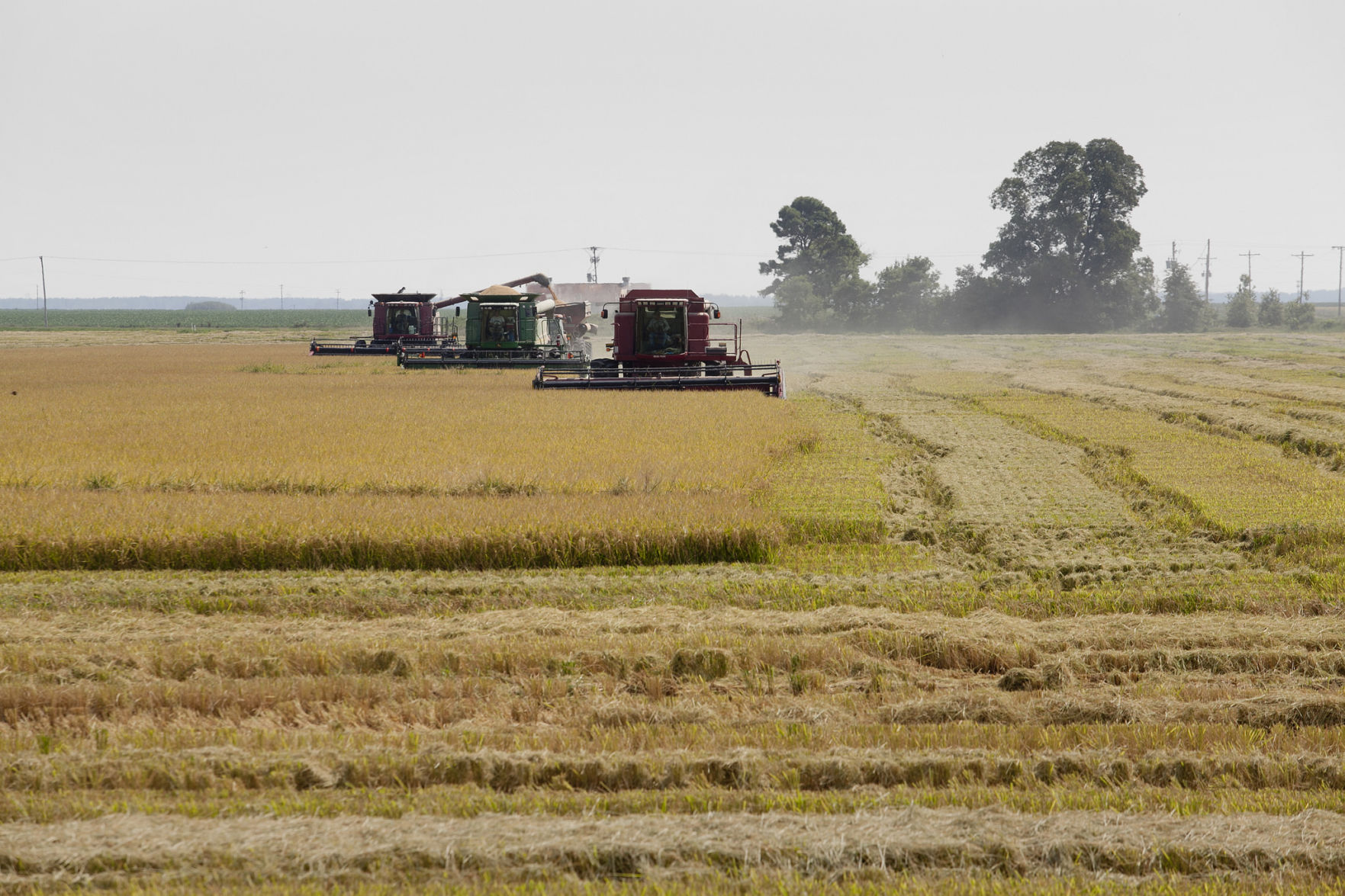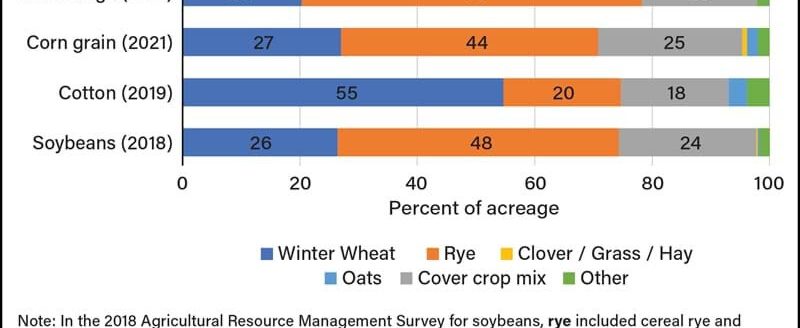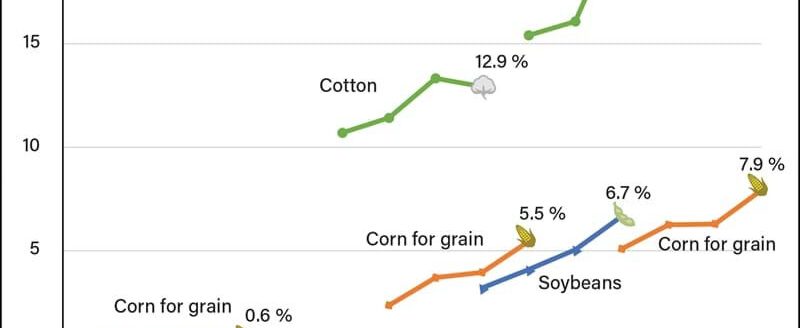Final NASS roundup for 2017: A great year for cotton, soybeans and corn

With record yields for Arkansas cotton and soybeans, 2017 offered silver linings for the state as flooding cut the state’s rice acreage and drought battered hay and winter wheat.
According to the U.S. Department of Agriculture’s 2017 Arkansas Crop Production Annual Summary, Arkansas cotton growers averaged a yield of 1,205 pounds per acre, the highest on record and an increase of 130 pounds per acre over 2016. Acreage was also up by 17 percent over the previous year to 438,000 acres.
Soybeans also saw new records in both acreage and yield putting overall production at 179 million bushels—an increase of 23 percent over 2016.
Peanut production, while still a small slice of the state’s agricultural pie, also saw strong growth gaining both acreage and yield to hit an overall production of 148 million pounds in 2017 an increase of 34 percent over the previous year. Travis Faske, extension plant pathologist and interim peanut agronomist for the University of Arkansas System Division of Agriculture, said that peanut production in Arkansas will likely be limited in the near term by the relative lack of buying points and storage facilities in the state.
At the other end of the spectrum, Arkansas grazing grasses, forages and winter wheat took a beating through the fall and winter, as severe drought conditions affected most of the north and north-central areas of the state.
John Jennings, professor and extension forage specialist for the Division of Agriculture, said that even as several days worth of rain appear headed for much of Arkansas, cattle ranchers and other growers in the state looking over acres of grasslands likely still have an uphill battle in store for 2018. While overall hay production dropped just 3 percent in 2017 to 2.33 million tons, cold temperatures throughout December and January led producers to start feeding hay relatively early.
“A lot of people are running low on hay in those drought-stricken areas in northern and north-central Arkansas,” Jennings said. “People are having a hard time finding hay to buy and hay supply is getting tight.”
Winter wheat dropped 15 percent from 2016 to 170,000 acres—the lowest wheat acreage in Arkansas since 1962, according to the USDA. Jason Kelley, extension wheat and feed grains agronomist for the Division of Agriculture, said relatively low market price combined with the dry fall to drive acreage down.
Grain sorghum acres declined yet again having plummeted from more than 400,000 acres harvested in 2015 to 44,000 in 2016 and finally to 7,000 acres in 2017.
“We’re now down to very limited acres, which in itself causes problems,” Kelley said. “When you have only a few scattered acres, some grain terminals just won’t be taking sorghum and marketing is becoming an issue.”
He said pest management challenges also presented a disincentive for growers considering sorghum.
“The sugarcane aphid has been an eye-opening pest for many growers,” Kelley said. “It takes money to control it and when you’re growing something that may not be very profitable to begin with, that extra expense just means fewer acres.”
Arkansas growers planted 620,000 acres of corn in 2017, a 140,000 acre drop from 2016. Despite the spring flooding, the state’s corn had a good year overall, Kelley said. The relatively mild summer and above-average rainfall helped increase yields to 183 bushels per acre, the third highest average yield in the state.
Finally, 2017 was something of a mixed bag for the country’s No. 1 rice producing state. After heavy flooding in April and May reduced harvestable acreage to about 1.1 million acres—a 27 percent drop from 2016—average yield actually rose by 570 pounds to 7,490 pounds per acre.
Jarrod Hardke, extension rice agronomist for the Division of Agriculture, said rice growers in the state ended up with the third-highest yield average on record.
“If you didn’t lose a lot of acres to flooding, you actually came out ahead,” Hardke said. “A lot of levees had to be re-pulled and we lost any rice that was planted on them. Ultimately, 2017 was very much a ‘think outside the box’ year for Arkansas rice growers.”
Hardke said that 2018 is likely to prove tempting for ambitious Arkansas rice growers, with likely plantings of 1.5 million acres in rice.
“We’re definitely looking at a tremendous rebound year in terms of overall acres,” he said. “The biggest part of that jump are the long-grain acres, that, in theory, are going to go from 950,000 acres all the way up to 1.25 million. But medium grain is also going to make a big jump from 150,000 acres to about 250,000 acres.”
He said that overall rice acreage may decrease from that prediction slightly however if soybean prices continue to climb they will offer a more profitable alternative to rice.
“But we’re in line for an upswing year, no matter what,” he said.
To learn about Arkansas row crops, contact your local Cooperative Extension Service agent or visit www.uaex.edu.

